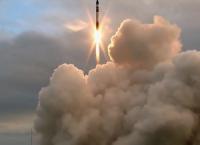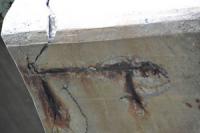-
Quantum technology holds promise of a future without fakes
Counterfeit products are a huge problem - from medicines to car parts, fake technology costs lives. Every year, imports of counterfeited and pirated goods around the world cost nearly $0.5 trillion in lost revenue. Counterfeit medicines alone cost the industry over $200 billion every year. They are also dangerous to our health – around a third contain no active ingredients, resulting in a million deaths a year. Researchers exhibiting at the Royal Society Summer Science Exhibition believe we are on the verge of a future without fakes thanks to new quantum technology.
-
-
Smart quadcopters find their way on their own -- without human help or GPS
Phase 1 of DARPA’s Fast Lightweight Autonomy (FLA) program concluded recently following a series of obstacle-course flight tests in central Florida. Over four days, three teams of DARPA-supported researchers huddled under shade tents in the sweltering Florida sun, fine-tuning their sensor-laden quadcopter unmanned aerial vehicles (UAVs) during the intervals between increasingly difficult runs. The quadcopters slalomed through woodlands, swerved around obstacles in a hangar, and reported back to their starting point all by themselves.
-
-
New bracing for durable structures in earthquake-prone regions
Across the world, severe earthquakes regularly shake entire regions. More than two billion people live in danger zones – many of them in structures not built to withstand an earthquake. Together with partners from industry, researchers are developing building materials designed to prevent buildings from collapsing in a natural disaster.
-
-
Addressing the threat of vehicle-borne IEDs
In July of 2016, a refrigerator truck packed with explosives detonated next to a crowded apartment block in Baghdad’s Karrada neighborhood. The blast killed 323 people and was one of the worst Vehicle–Borne Improvised Explosive Device (VBIED also known as car bombs) attacks ever recorded. On 30 May 2017, a VBIED in a tanker truck ripped through the embassy quarter of Kabul, killing more than 150 people. DHS S&T has taken measures to address this threat directly.
-
-
Drones that drive
Being able to both walk and take flight is typical in nature — many birds, insects, and other animals can do both. If we could program robots with similar versatility, it would open up many possibilities: Imagine machines that could fly into construction areas or disaster zones that aren’t near roads and then squeeze through tight spaces on the ground to transport objects or rescue people. Researchers from MIT are aiming to develop robots that can both maneuver around on land and take to the skies.
-
-
U.S. still first in science, but China rising fast as funding stalls in U.S., other countries
American scientific teams still publish significantly more biomedical research discoveries than teams from any other country, a new study shows, and the United States still leads the world in research and development expenditures. But American dominance is slowly shrinking, the analysis finds, as China’s skyrocketing investing on science over the last two decades begins to pay off. Chinese biomedical research teams now rank fourth in the world for total number of new discoveries published in six top-tier journals, and the country spent three-quarters what the United States spent on research and development during 2015.
-
-
Navy tests new mine-detection drone
The new Mine Warfare Rapid Assessment Capability (MIW RAC) system is a portable, remote-controlled system that can detect buried or underwater mines during amphibious beach landings. It’s designed to help explosive ordnance disposal teams quickly find mines and dangerous metal obstacles within coastal surf zones and very-shallow-water zones. MIW RAC consists of a one-pound quadcopter outfitted with an ultra-sensitive magnetometer sensor system to detect mines and provide real-time search data to a handheld Android device.
-
-
Preventing autonomous vehicles from being hacked
Although autonomous vehicles are essentially large computers on wheels, securing them is not the same as securing a communication network that connects desktop computers and smartphones to large geographical areas due to the roles that the sensors and actuators play in the physical layer of the network. Researchers have developed an intelligent transportation system prototype designed to avoid collisions and prevent hacking of autonomous vehicles.
-
-
Remote detection of hazardous radioactive substances
Remote detection of radioactive materials is impossible when the measurement location is far from its source. A typical radiation detectors, like Geiger-Muller counters can detect 1 milli Curie (mCi) of Cobalt-60 (60Co) at a maximum distance of 3.5 meters, but are inefficient at measuring lower levels of radioactivity or at longer distances. Researchers have developed a method for the remote detection of hazardous radioactive substances. With the help of this newly developed detection device, the detection of various types of radioactive materials can be done from a remote distance.
-
-
Quicker identification of chemicals used in rare-Earth processing methods
Rare-earth metals are vital to many modern energy technologies, but high commercial demand and mining challenges have made optimizing the U.S. production and use of them of vital importance. Testing and developing more efficient and environmentally friendly ways of extracting rare-earth metals as speedily as possible is thus important – and DOE’s Critical Materials Institute has developed a computer program, called ParFit, that can vastly reduce the amount of time spent identifying promising chemical compounds used in rare-Earth processing methods.
-
-
New fabric coating could neutralize chemical weapons, save lives
Chemical weapons are nightmarish. In a millisecond, they can kill hundreds, if not thousands. But, in a new study, scientists report that they have developed a way to adhere a lightweight coating onto fabrics that is capable of neutralizing a subclass of these toxins — those that are delivered through the skin. The life-saving technique could eventually be used to protect soldiers and emergency responders.
-
-
Preventing 3D printing hacks

Additive manufacturing (AM), also called 3D printing, is growing fast. Worldwide, the AM market grew nearly 26 percent to more than $5 billion last year, versus 2015, and another 17.4 percent this year versus last. The rapid prototyping market alone is expected to reach $5 billion by 2020. But since the global supply chain for AM requires companies to share computer aided design (CAD) files within the organization or with outside parties via email or cloud, intellectual-property thieves and malefactors have many opportunities to filch a manufacturer’s design files to produce counterfeit parts.
-
-
Mobile phones can reveal exposure to radiation
In accidents or terror attacks which are suspected to involve radioactive substances, it can be difficult to determine whether people nearby have been exposed to radiation. But by analyzing mobile phones and other objects which come in close contact with the body, it is possible to retrieve important information on radiation exposure.
-
-
Water-repelling, long-lasting concrete could make potholes disappear
Water is concrete’s ultimate enemy. Although concrete withstands constant beatings from cars and trucks, water can break it down, pooling on its surface and infiltrating the tiniest cracks. Add freezing and thawing cycles, and it is no wonder roads need frequent repairs. To keep Mother Nature out, researchers have created a water-repelling concrete. The concrete is not only water-repellent – it isdesigned to have a service life of up to 120 years.
-
-
“Spectral fingerprinting” sees through concrete to detect early corrosion

Doctors use X-ray, CT scan, or MRI to determine whether a patient has suffered any internal injuries. Researchers are using the same principle, but in a more powerful form, to detect corrosion, the primary danger threatening the health of the steel framework within the nation’s bridges, roads, and other aging physical infrastructure. What they have developed is a noninvasive “spectral fingerprint” technique that reveals the corrosion of concrete-encased steel before it can cause any significant degradation of the structure it supports.
-
More headlines
The long view
Encryption Breakthrough Lays Groundwork for Privacy-Preserving AI Models
In an era where data privacy concerns loom large, a new approach in artificial intelligence (AI) could reshape how sensitive information is processed. New AI framework enables secure neural network computation without sacrificing accuracy.
AI-Controlled Fighter Jets May Be Closer Than We Think — and Would Change the Face of Warfare
Could we be on the verge of an era where fighter jets take flight without pilots – and are controlled by artificial intelligence (AI)? US R Adm Michael Donnelly recently said that an upcoming combat jet could be the navy’s last one with a pilot in the cockpit.
AI and the Future of the U.S. Electric Grid
Despite its age, the U.S. electric grid remains one of the great workhorses of modern life. Whether it can maintain that performance over the next few years may determine how well the U.S. competes in an AI-driven world.
Using Liquid Air for Grid-Scale Energy Storage
New research finds liquid air energy storage could be the lowest-cost option for ensuring a continuous power supply on a future grid dominated by carbon-free but intermittent sources of electricity.
Enhanced Geothermal Systems: A Promising Source of Round-the-Clock Energy
With its capacity to provide 24/7 power, many are warming up to the prospect of geothermal energy. Scientists are currently working to advance human-made reservoirs in Earth’s deep subsurface to stimulate the activity that exists within natural geothermal systems.
Experts Discuss Geothermal Potential
Geothermal energy harnesses the heat from within Earth—the term comes from the Greek words geo (earth) and therme (heat). It is an energy source that has the potential to power all our energy needs for billions of years.
Autonomous Weapon Systems: No Human-in-the-Loop Required, and Other Myths Dispelled
“The United States has a strong policy on autonomy in weapon systems that simultaneously enables their development and deployment and ensures they could be used in an effective manner, meaning the systems work as intended, with the same minimal risk of accidents or errors that all weapon systems have,” Michael Horowitz writes.
Are We Ready for a ‘DeepSeek for Bioweapons’?
Anthropic’s Claude 4 is a warning sign: AI that can help build bioweapons is coming, and could be widely available soon. Steven Adler writes that we need to be prepared for the consequences: “like a freely downloadable ‘DeepSeek for bioweapons,’ available across the internet, loadable to the computer of any amateur scientist who wishes to cause mass harm. With Anthropic’s Claude Opus 4 having finally triggered this level of safety risk, the clock is now ticking.”
Autonomous Weapon Systems: No Human-in-the-Loop Required, and Other Myths Dispelled
“The United States has a strong policy on autonomy in weapon systems that simultaneously enables their development and deployment and ensures they could be used in an effective manner, meaning the systems work as intended, with the same minimal risk of accidents or errors that all weapon systems have,” Michael Horowitz writes.
Are We Ready for a ‘DeepSeek for Bioweapons’?
Anthropic’s Claude 4 is a warning sign: AI that can help build bioweapons is coming, and could be widely available soon. Steven Adler writes that we need to be prepared for the consequences: “like a freely downloadable ‘DeepSeek for bioweapons,’ available across the internet, loadable to the computer of any amateur scientist who wishes to cause mass harm. With Anthropic’s Claude Opus 4 having finally triggered this level of safety risk, the clock is now ticking.”
